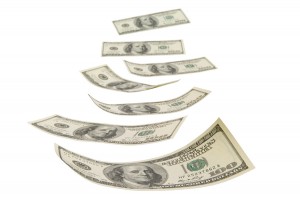To understand why the insurance-linked securities market will offer greater amounts of terror risk coverage in the years ahead, you have to understand the difference between two groups of ILS investors, an investment manager says.
“ILS investors care mainly about fair compensation for the risk, and everything else is secondary to that,” says John Seo, co-founder and managing principal of Fermat Capital Management LLC, referring specifically to the objectives of pension funds investing in the ILS market.
Testifying before the House Financial Services committee, which was considering modifications to the Terrorism Risk Insurance Act last week, Seo forecast that ILS terrorism capacity, currently standing at about $3 billion, would rise to between $9 billion and $12 billion by 2020. He also suggested that numbers like $20-$30 billion are possible.
 Seo attributes growth to investors that he refers to as “slow money” investors, such as pension funds, distinguishing their objectives and concerns from “fast money” hedge funds.
Seo attributes growth to investors that he refers to as “slow money” investors, such as pension funds, distinguishing their objectives and concerns from “fast money” hedge funds.
It is the fast money that worries about correlations between terrorism events and the performance of broader financial markets—worries that would stall growth if they were shared by the bigger slow-money investor segment of ILS market, he says.
“Fast money often runs highly leveraged positions, in long-short pairing as well. Even a relatively small and brief departure from correlation assumptions can cause big trouble for fast money. This makes fast money naturally sensitized to the possibility of minute flaws in correlation assumptions,” Seo writes in prepared testimony for the committee.
Seo’s written analysis goes on to suggest that in addition to this very real source of concern, some of the messages coming from the fast-money camp are simply requests for higher yield.
“Fast-money reasons that slow money…keeps ILS yields low on the assumption of noncorrelation. Fast money goes on to reason that any potential correlation is uncompensated and therefore greater than normal yield is required for ILS with any potential correlation issues…
“Armed with this kind of reasoning, which borders on militancy at times, fast money can stay on the sidelines for years at a time, waiting for what it perceives as distressed yields before entering a particular part of the ILS market,” Seo writes.
In contrast, the bigger slow-money segment of the overall ILS market capacity—amounting to some 60 percent by Seo’s estimates—”is clearly enamored with the general low correlation of ILS to stocks and bonds.”
“By incorrectly combining slow-money declarations of love for the low correlation of ILS with the noncorrelation militancy of fast money, it is possible to come up with the false, composite picture that all ILS investors are a tough bunch when it comes to ILS correlation risk. Yet, this is simply not true.”
According to Seo, slow money defines correlation on a much longer time scale than fast money—”years as opposed to days, weeks or months.”
“Does a prolonged economic recession increase the risk of an insured loss event? Does an insured loss event increase the risk of a prolonged recession? Measured on such long timescales, to my knowledge, no significant correlation between ILS and traditional markets has ever been found,” he writes.
Noting that low correlation with traditional investments “is desired by slow money,” Seo stresses that “the insistence is not so strict that zero correlation is required.”
“Furthermore, the long timescale used to gauge correlation washes out most short-term effects usually associated with, or defined as, correlation.”
According to Seo, the answer “is almost universally [that] ILS pays better for the risk.”
“This is because stock and bond investors are almost never compensated for bearing extreme event risk, whereas ILS investors are almost always paid for the extreme event risks they cover,” he says.
Seo’s written analysis concludes by noting that for slow money, “any lack of correlation with stock and bond returns is icing on the cake, but fair compensation for the risk is of the greatest importance in the end.”





















 Lemonade CEO Declares ‘Best Quarter Ever,’ Posts Narrowed Q4 Loss of $30M
Lemonade CEO Declares ‘Best Quarter Ever,’ Posts Narrowed Q4 Loss of $30M  Rise of the Frequency Perils
Rise of the Frequency Perils  Four States See Increase in Auto Insurance Liability Limits in 2025
Four States See Increase in Auto Insurance Liability Limits in 2025  Winter Weather Loss Prevention: A Strong ROI Opportunity for Property Insurers
Winter Weather Loss Prevention: A Strong ROI Opportunity for Property Insurers 

